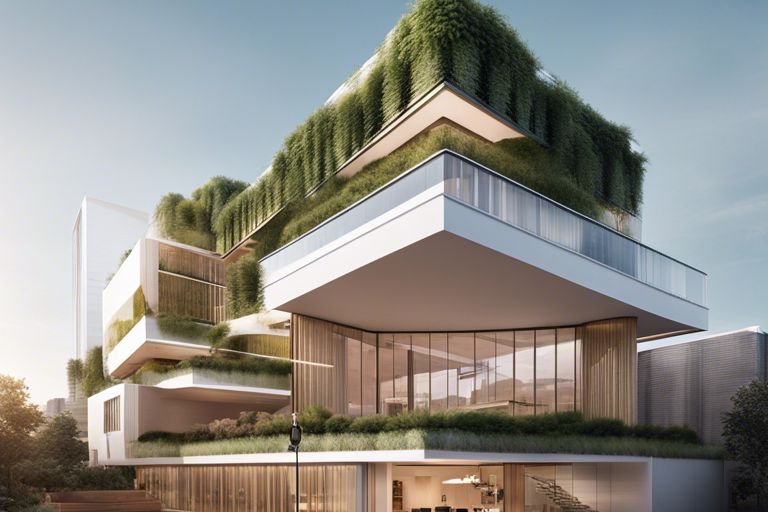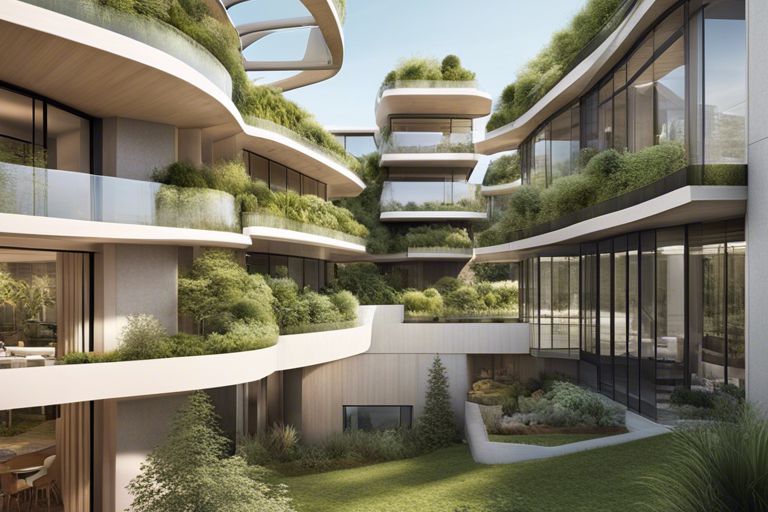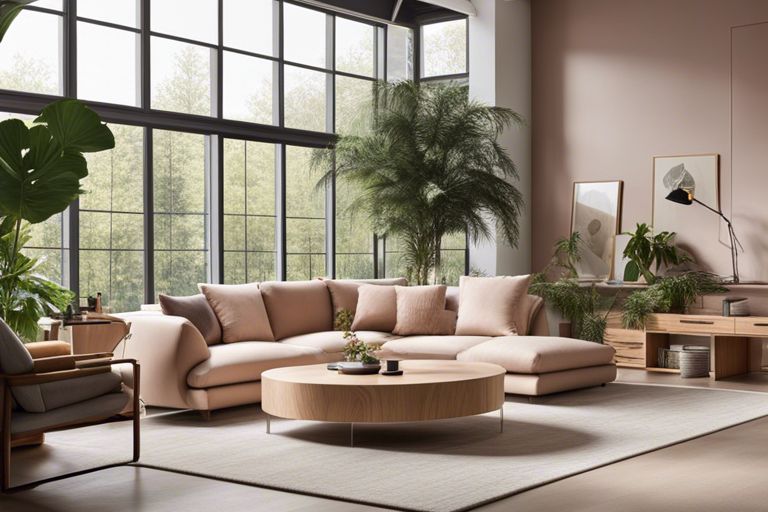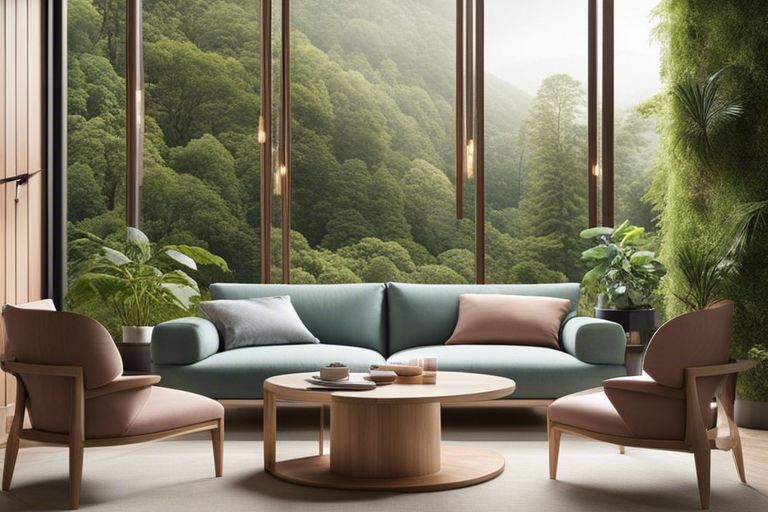Just imagine a building that not only reduces its environmental impact but also enhances your well-being and connection to nature. Biophilic design, which integrates nature into the built environment, has a profound impact on sustainable architecture. By incorporating natural elements like greenery, natural light, and water features, biophilic design not only improves air quality and energy efficiency but also boosts your mood, productivity, and overall health. This synergy between nature and architecture not only benefits you but also contributes to a more sustainable future for our planet.
Key Takeaways:
- Biophilic design enhances sustainability: Biophilic design principles like incorporating natural elements, maximizing natural light, and creating spaces that mimic nature can reduce energy consumption and improve overall well-being.
- Connection to nature improves human experience: By integrating elements like greenery, water features, and natural textures into architectural designs, biophilic design creates a more harmonious and calming environment that enhances human health and productivity.
- Long-term benefits for the environment: Sustainable architecture with biophilic design not only benefits the immediate occupants but also contributes to larger environmental goals by reducing carbon emissions, promoting biodiversity, and fostering a deeper respect for nature.

Defining Biophilic Design
The Concept of Biophilia
Any design that incorporates elements of nature to create a more harmonious and human-centered built environment can be considered biophilic. Biophilia is the innate connection between humans and the natural world, a concept popularized by biologist E.O. Wilson. This connection is deeply rooted in our biology and psychology, influencing our well-being and productivity.
Principles of Biophilic Design
One key principle of biophilic design is the integration of natural elements like plants, water, and natural light into built environments. This integration not only enhances aesthetics but also has numerous benefits for occupants, including improved air quality, reduced stress, and increased focus and productivity. By mimicking natural patterns and forms, biophilic design creates spaces that resonate with our inner connection to nature.
Defining biophilic design involves carefully analyzing how different elements of nature can be incorporated into architectural designs to promote human well-being and sustainability. By understanding the biophilic principles and applying them in architectural practices, designers can create spaces that not only look beautiful but also support the health and wellness of the people who inhabit them.
The Connection to Sustainable Architecture
Shared Goals: Environmental Stewardship
Any architectural design that aims to be sustainable shares an vital goal with biophilic design: environmental stewardship. You will find that both approaches prioritize the well-being of the planet and strongly consider how human actions and architectural choices impact the environment. By integrating nature into the built environment, you not only create spaces that are visually appealing but also reduce the ecological footprint of the structures.
Synergies between Biophilic Design and Sustainable Architecture
For stewardship of the environment, biophilic design and sustainable architecture prove to be highly complementary. You will notice that both concepts emphasize the use of natural materials, energy efficiency, and harmonious integration of buildings into their surroundings. The strong emphasis on maximizing natural light, ventilation, and the use of green spaces in biophilic design aligns perfectly with sustainable architecture goals of reducing energy consumption and promoting a healthier indoor environment.
Sustainable architecture also focuses on the life cycle of materials, aiming to reduce waste and enhance resource efficiency. When combined with biophilic design elements like living walls, green roofs, and natural landscaping, the overall impact on sustainability is significantly increased. This integrated approach not only benefits the environment but also enhances the well-being and productivity of the occupants within the built environment.
Environmental Benefits
Many environmental benefits come from incorporating biophilic design principles into sustainable architecture. These benefits have a significant impact on both the occupant’s well-being and the planet’s health.
Improved Air Quality
The connection to nature in biophilic design helps improve indoor air quality. By incorporating green walls, living roofs, and natural ventilation systems, you can reduce the presence of harmful chemicals and pollutants in your living or working space. Plants have the ability to purify the air by absorbing toxins and releasing oxygen, creating a healthier environment for you and lessening your impact on the environment.
Natural Light and Ventilation
Benefits of natural light and ventilation in biophilic design include increased energy efficiency, reduced reliance on artificial lighting and heating, and a deeper connection to the surrounding environment. By maximizing natural light into your living or working space, you can reduce your energy consumption and improve your overall well-being. Additionally, natural ventilation systems provide a constant flow of fresh air, creating a more comfortable and healthier indoor environment.
Reduced Energy Consumption
Natural elements in biophilic design such as daylight, natural ventilation, and shading devices help reduce your energy consumption. By strategically placing windows, skylights, and shading elements, you can maximize natural light and heat, reducing the need for artificial lighting and heating. This not only saves you money on energy bills but also reduces your carbon footprint and your impact on the environment.
Based on the article title “What Impact Does Biophilic Design Have On Sustainable Architecture?”, you can see that incorporating biophilic design principles into sustainable architecture has significant environmental benefits.
Human-Centric Advantages
Once again, biophilic design proves its worth by offering numerous human-centric advantages that positively impact the occupants of a building. From enhanced productivity to mental health and stress reduction, the incorporation of nature in architectural spaces can significantly improve the well-being of individuals.
Enhanced Productivity and Well-being
Productivity: When you are surrounded by elements of nature in your workspace, such as natural light, greenery, and organic materials, you are likely to experience a boost in productivity and an overall sense of well-being. Studies have shown that employees working in environments with biophilic design elements tend to be more focused, creative, and engaged in their tasks.
Mental Health and Stress Reduction
Productivity: Biophilic design plays a crucial role in promoting mental health and reducing stress levels among building occupants. Being connected to nature has a calming effect on your mind and body, helping you cope with daily stressors more effectively. Natural elements like water features, plants, and views of the outdoors can contribute to a sense of relaxation and tranquility in indoor spaces.
A holistic approach to design that considers the well-being of occupants is necessary in creating sustainable and human-centered buildings. Biophilic design goes beyond aesthetics; it prioritizes the health and happiness of individuals by integrating natural elements into the built environment.
Increased Occupant Satisfaction
To ensure that occupants are satisfied with their indoor environment, architects and designers must prioritize biophilic design principles. When you feel connected to nature within your living or working space, your overall satisfaction and comfort levels are likely to increase. This can lead to higher retention rates in commercial buildings and improved quality of life in residential settings.
Advantages: By embracing biophilic design, you can create spaces that not only contribute to sustainability but also prioritize the well-being of those who inhabit them. The human-centric advantages of biophilic design have a lasting impact on the way we perceive and interact with our built environment, fostering a sense of connection to nature in our daily lives.
Design Strategies for Biophilic Architecture
Incorporating Natural Materials
For How are Biophilic Design and Sustainable Design Different? Architecture that incorporates natural materials such as wood, stone, and plants can greatly enhance the connection to nature within a building. These materials not only bring a sense of warmth and organic beauty to the space but also contribute to a healthier indoor environment. Using natural materials helps reduce the carbon footprint of the building and promotes sustainability by utilizing renewable resources.
Maximizing Daylight Exposure
For maximizing daylight exposure in a building, architects and designers can strategically position windows, skylights, and light wells to maximize natural light throughout the space. This not only reduces the need for artificial lighting but also creates a connection to the natural rhythms of the day, enhancing well-being and productivity.
Another benefit of maximizing daylight exposure is the potential for energy savings. By relying more on natural light, buildings can decrease their dependence on electricity, leading to reduced energy costs and a smaller environmental impact.
Biophilic Elements in Building Design
An effective way to incorporate biophilic elements in building design is by including features such as green walls, indoor gardens, water features, and views of nature. These elements not only enhance the aesthetic appeal of the space but also have proven benefits for health and well-being. They can reduce stress, improve air quality, and promote a sense of calm and tranquility.
Materials play a key role in biophilic design, with natural elements such as wood, stone, and living plants being commonly used to create a harmonious connection to the environment. By integrating these materials thoughtfully, architects can create spaces that not only look beautiful but also support the well-being of both occupants and the planet.
Challenges and Limitations
Balancing Aesthetics and Functionality
Functionality: Keep in mind that while incorporating biophilic design elements into sustainable architecture can enhance the aesthetic appeal of a space, it is crucial to strike a balance with functionality. Your design should not only look visually appealing but also serve its intended purpose efficiently. Biophilic design should not compromise the practical aspects of a building.
Cost and Resource Constraints
Resource: Keep in mind that implementing biophilic design features can sometimes be limited by cost and availability of resources. You may encounter constraints when trying to source sustainable materials or incorporate biophilic elements that require additional resources. Consider the availability and cost of resources before integrating biophilic design into your sustainable architecture projects.
Cost: In some cases, biophilic design may require a higher initial investment compared to traditional architectural approaches. You may need to carefully evaluate the cost implications of incorporating biophilic elements and ensure that it aligns with the project budget without compromising sustainability goals. Be prepared to justify the costs associated with biophilic design in terms of long-term benefits for the environment and occupants.
Integrating Biophilic Design into Existing Infrastructure
To: To overcome challenges in integrating biophilic design into existing infrastructure, you may need to carefully assess the feasibility and adaptability of biophilic elements within the constraints of the current building structure. Consider consulting with experts in sustainability and architecture to explore creative solutions for incorporating biophilic design into pre-existing buildings.
Summing up
The impact of biophilic design on sustainable architecture is significant as it not only improves the aesthetic appeal of buildings but also enhances occupant well-being and reduces energy consumption. By incorporating nature into the design of buildings, you can create spaces that promote a connection to the natural environment, leading to a healthier and more productive indoor environment. Additionally, the use of biophilic design principles can help reduce the ecological footprint of buildings, contributing to a more sustainable future for our planet.
FAQ
Q: What is biophilic design?
A: Biophilic design is an innovative approach that incorporates nature and natural elements into the design of buildings and spaces. This design principle aims to strengthen the connection between humans and nature in the built environment.
Q: How does biophilic design contribute to sustainable architecture?
A: Biophilic design plays a crucial role in sustainable architecture by enhancing the overall environmental performance of buildings. By incorporating natural elements such as green roofs, natural lighting, and indoor plants, biophilic design can help reduce energy consumption, improve air quality, and promote occupant well-being.
Q: What are some benefits of integrating biophilic design into sustainable architecture?
A: Integrating biophilic design principles into sustainable architecture can lead to numerous benefits, including enhanced occupant productivity and creativity, increased overall well-being, reduced stress levels, improved air quality, and energy savings. Additionally, biophilic design can help create aesthetically pleasing and visually stimulating built environments that mimic the tranquility and beauty of nature.



